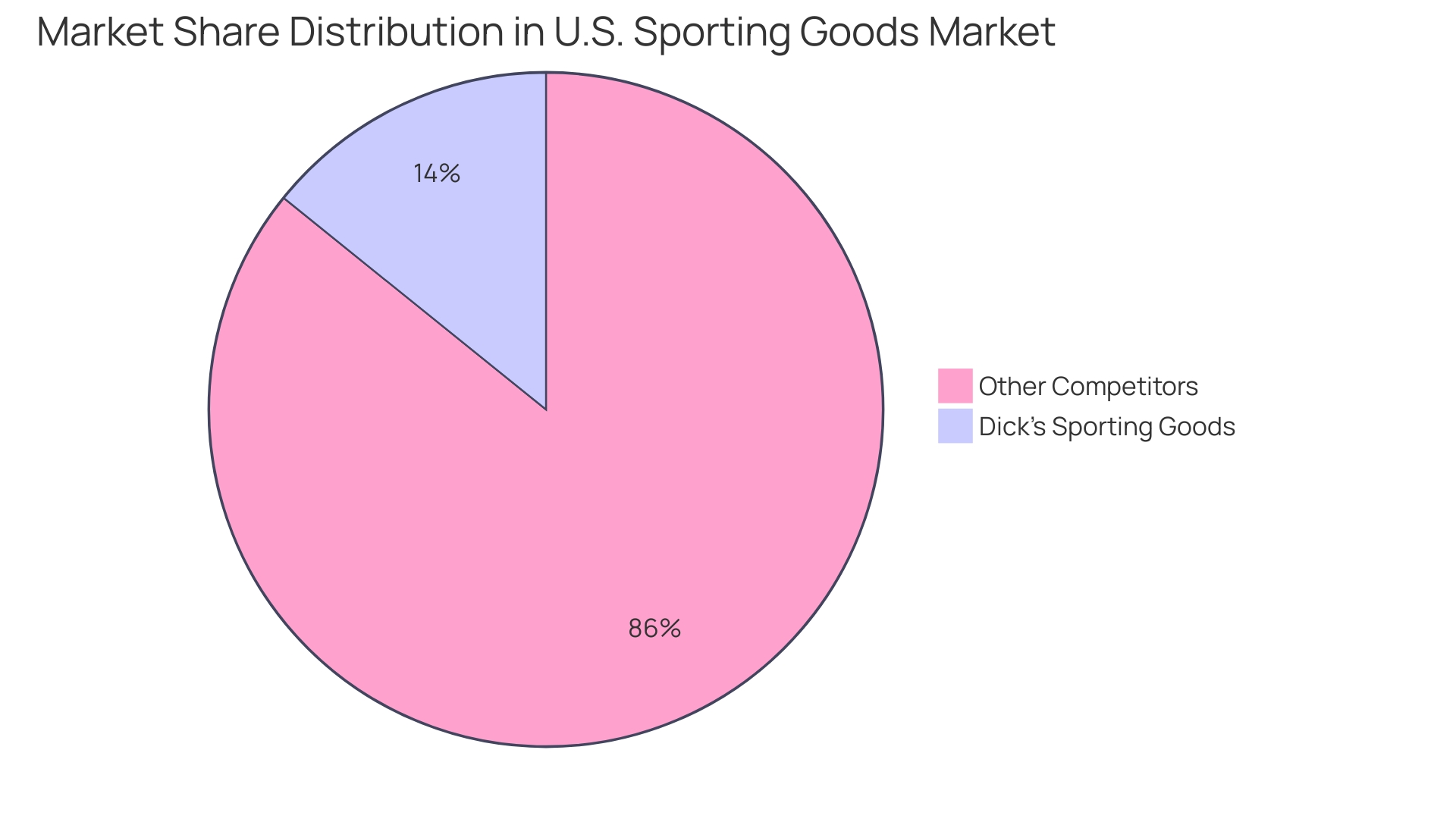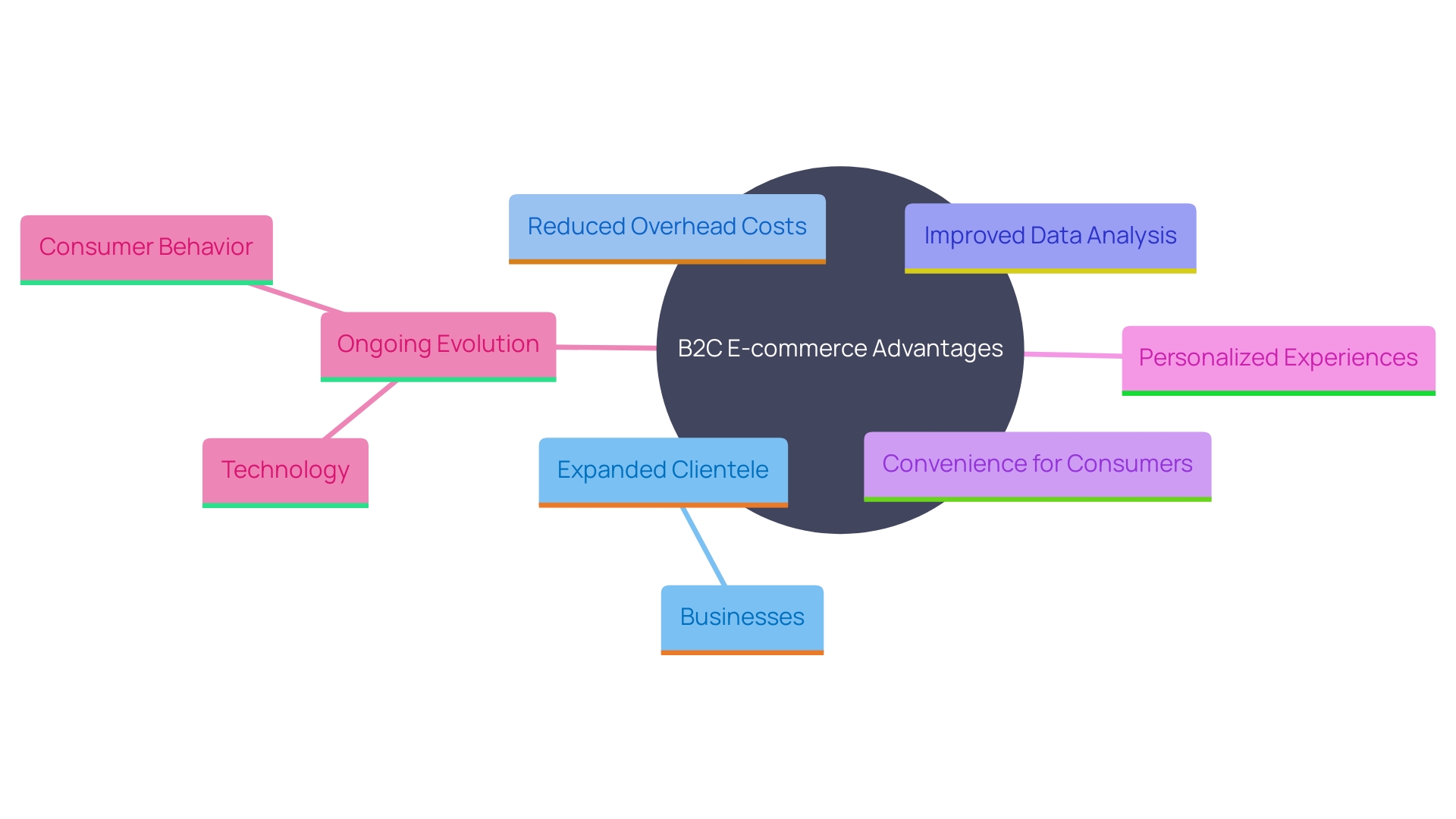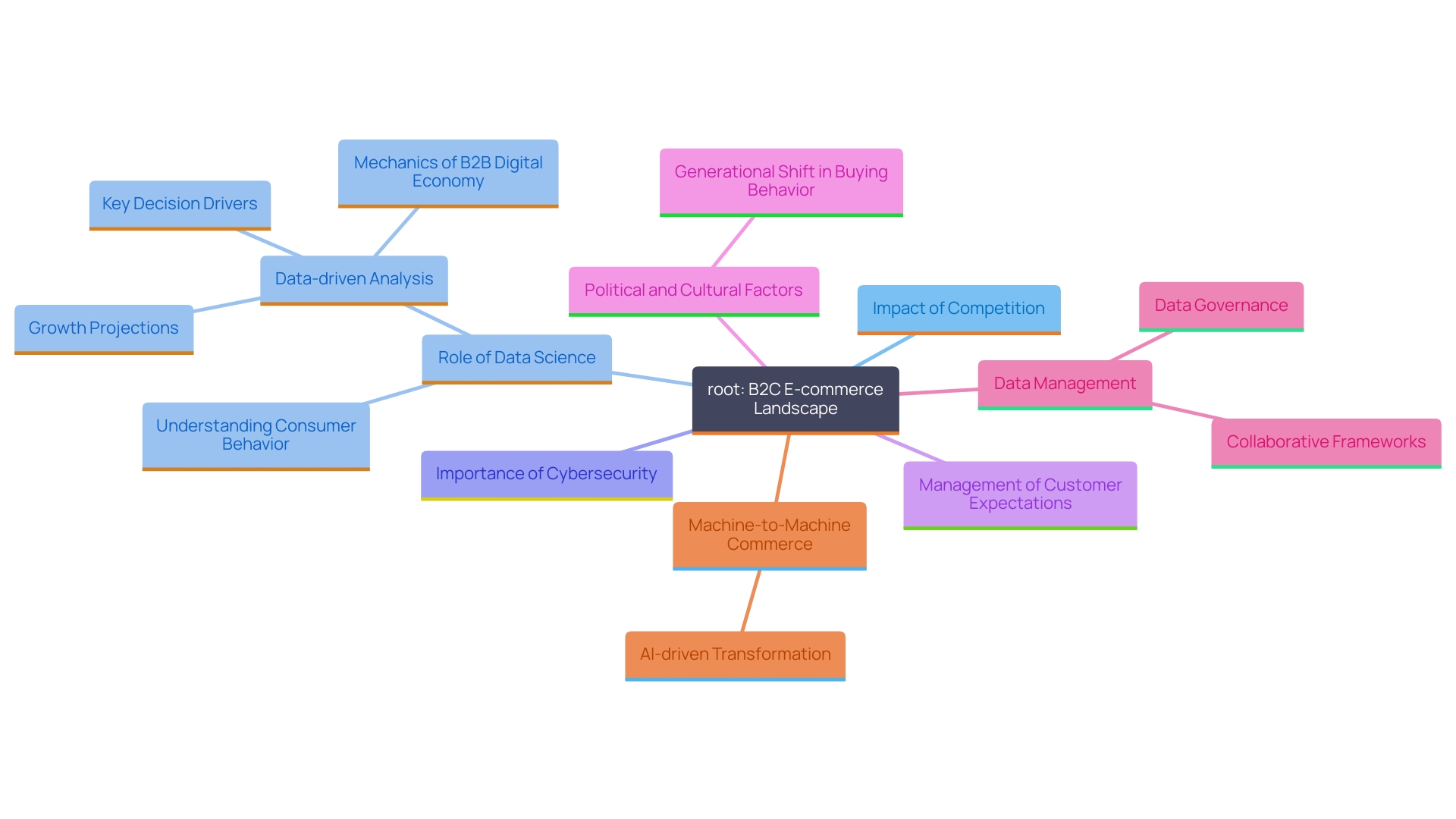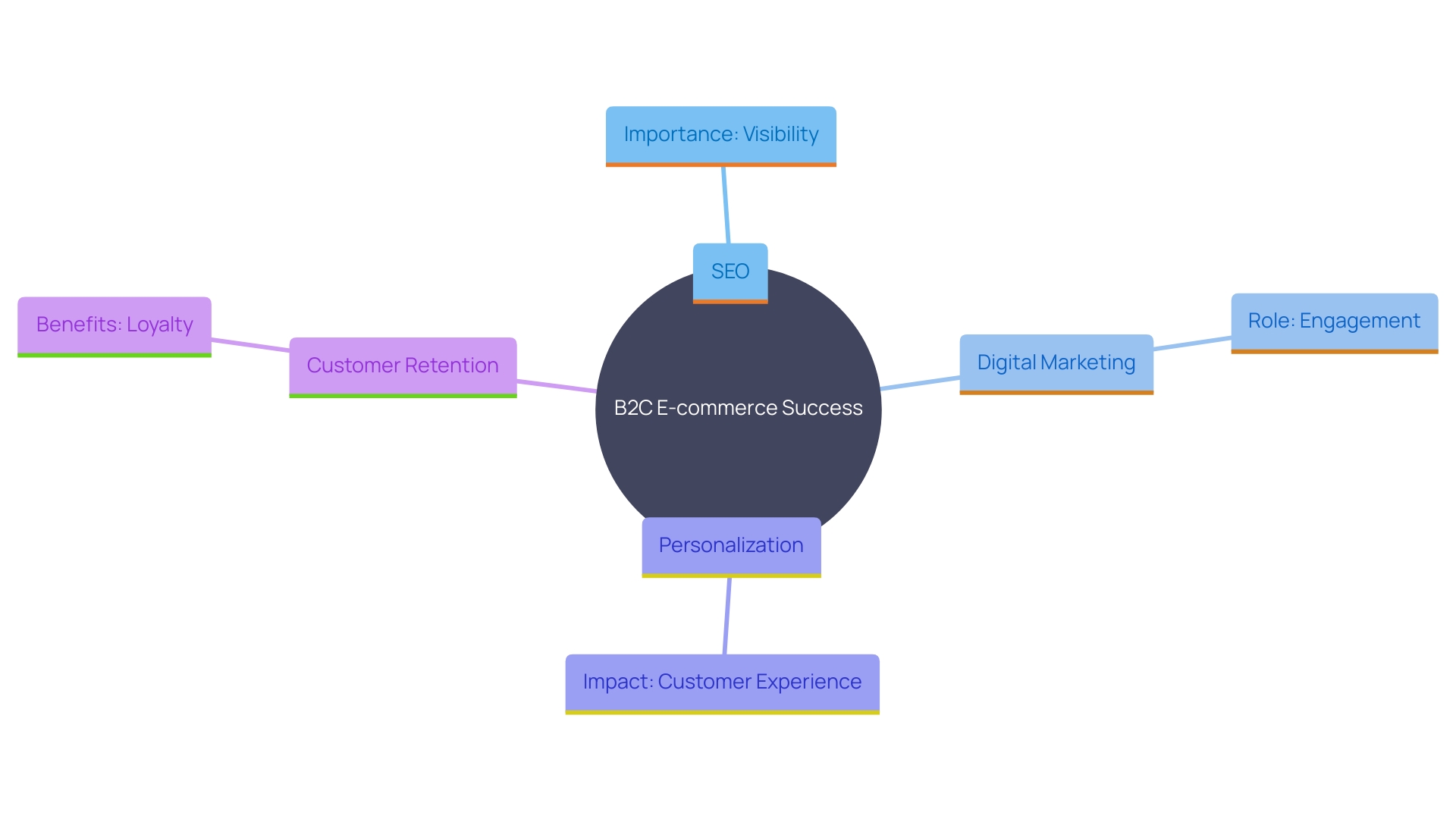Introduction
In the rapidly evolving digital landscape, B2C e-commerce stands as a pivotal force reshaping how businesses interact with consumers. Business-to-Consumer e-commerce, encompassing a myriad of activities from retail sales to subscription services, has revolutionized traditional retail paradigms by enabling businesses to reach a global audience effortlessly. Companies like Dick's Sporting Goods illustrate this transformation, growing from a small bait shop to a major player in the U.S. sporting goods market through strategic digital investments.
The rise of innovative concepts such as checkout-free stores further exemplifies the shift towards more convenient, tech-driven shopping experiences. Understanding the various models within B2C e-commerce, from direct sellers to social commerce, is crucial for businesses aiming to meet the diverse needs of today's digital-savvy consumers. The benefits of this model are manifold, offering businesses expanded reach and reduced overhead while providing consumers with convenient, personalized shopping experiences.
However, the journey is not without its challenges, including fierce competition and cybersecurity threats. By focusing on key success elements such as user-friendly design, secure payment options, and responsive customer service, and adopting effective strategies like SEO optimization and personalization, businesses can navigate the complexities of B2C e-commerce and thrive in this dynamic market.
Definition of B2C E-Commerce
B2C online retail, or Business-to-Consumer online retail, involves businesses selling products or services directly to buyers via the internet. This model includes a broad spectrum of activities such as retail sales, online marketplaces, and subscription services, enabling individuals to access goods and services around the clock. The digital revolution has significantly impacted traditional retail, allowing companies to reach global audiences seamlessly.
Take Dick's Sporting Goods, for example. Beginning as a modest bait and tackle shop in 1948, they now command an estimated 14.2% of the $67.2 billion U.S. sporting goods market. Their success in pivoting to e-commerce has been driven by strategic growth and technological investments. In 2017, Dick's Sporting Goods committed substantial resources to enhance their digital presence, showcasing how traditional retailers can adapt to the evolving digital landscape.
Furthermore, the rise of novel retail ideas such as checkout-free shops driven by Zippin technology, like the one at Dublin Airport, emphasizes the continuous change in shopping experiences. These advancements cater to the growing demand for convenience, allowing shoppers to make purchases quickly and efficiently without traditional checkout lines.
The online shopping market spans various industries from retail and consumer goods to travel and hospitality. It includes enterprises operating exclusively online and those with a physical presence but extending their sales channels digitally. Utilizing the potential of online commerce, enterprises can broaden their reach, enhance sales, and present new, creative products to a worldwide customer base.

Types of B2C E-Commerce Models
B2C e-commerce includes various models that address the diverse needs and preferences of buyers.
-
Direct Sellers: These businesses sell their products straight to buyers through their own websites, bypassing traditional retail intermediaries. This model enables companies to maintain complete control over their brand experience, from product presentation to client service. Direct sellers utilize data from their platforms to comprehend buyer behavior and enhance their offerings, ensuring a seamless shopping experience.
-
Marketplaces: Platforms like Amazon and eBay serve as intermediaries, enabling multiple sellers to offer their products to a broad audience. Marketplaces foster a competitive atmosphere where sellers can connect with a larger audience, while buyers gain from a broad selection of products and competitive pricing. The blending of physical and digital channels, sometimes known as “phygital,” has become a crucial aspect of this model, offering consumers the convenience of online shopping with the immediacy of in-store pickups.
-
Subscription Services: Companies providing products or services on a recurring basis, such as streaming services or meal kit deliveries, fall under this category. Subscription services take advantage of the predictability of recurring income and the ability to establish long-term client relationships. By analyzing customer data, these companies can personalize offerings, reducing churn and enhancing customer satisfaction.
-
Social Commerce: This model leverages social media platforms to sell products directly through social networks. Social commerce utilizes the strength of social impact and peer suggestions, boosting sales through platforms where individuals already invest a considerable portion of their time. 'The incorporation of online shopping features within social media applications has simplified the purchasing process, making it easier for users to buy products without leaving their favorite platforms.'.
Each of these models plays a crucial role in the changing environment of B2C online retail, driven by technological advancements and shifting buyer behaviors. By comprehending and utilizing these models, organizations can effectively satisfy the needs of today’s digitally knowledgeable individuals.
Benefits of B2C E-Commerce
B2C e-commerce offers considerable advantages for both enterprises and clients. For companies, it broadens their clientele significantly beyond geographic boundaries and lowers overhead expenses in comparison to brick-and-mortar shops. Improved data analysis abilities enable companies to obtain profound understanding of customer behavior, resulting in more strategic marketing and inventory choices. For consumers, the convenience of shopping from any location, combined with access to a broader range of products and often lower prices, makes online shopping highly attractive. Furthermore, personalized shopping experiences and targeted marketing, driven by data science, enhance satisfaction by catering to individual preferences and needs. As Scott Rigby, Chief Technology Advisor at Adobe, emphasizes, focusing on creating experiences that address customer challenges will secure growth for years to come. This dynamic interaction between businesses and consumers in the B2C online retail space is continuously evolving, driven by technological advancements and changing consumer behaviors.

Key Elements of a Successful B2C E-Commerce Store
To ensure success in the B2C e-commerce landscape, several key elements must be in place:
-
User-Friendly Website Design: A visually appealing and intuitive interface is critical. As web design significantly impacts user perception and trust, it's essential to create a seamless and engaging online experience. The Jellyfish brand, for instance, revitalized its website to reflect its creativity and sophistication, ultimately enhancing user engagement and satisfaction.
-
Secure Payment Options: Offering a range of secure payment methods is vital in building trust in buyers. Checkout-free stores, like the one launched at Dublin Airport, utilize advanced technology to provide a seamless and secure transaction process, ensuring convenience and trust for shoppers.
-
Effective Product Descriptions: High-quality images and detailed descriptions are vital in representing products accurately. This assists buyers in making knowledgeable choices, decreasing the chances of returns and enhancing satisfaction. Detailed and accurate product information is paramount, as consumers rely heavily on these descriptions to understand what they are purchasing.
-
Responsive Support Service: Accessible and knowledgeable assistance is essential to address inquiries and concerns promptly. Companies such as City Bird, which oversee extensive inventories through platforms like Lightspeed Retail POS, illustrate the significance of a dependable service system that can address diverse client requirements effectively.
These elements, when combined, create a robust online commerce platform that not only attracts but retains customers by providing a superior shopping experience.
Challenges in B2C E-Commerce
B2C e-commerce continues to evolve rapidly, and with this evolution come significant challenges. One major hurdle is the fierce competition in the marketplace, requiring businesses to continuously innovate and optimize their online platforms. Technological advancements play a crucial role, with data science emerging as a key driver behind understanding consumer behavior and enhancing user experience. By examining data from various touchpoints—such as advertisements, product interactions, and purchase history—retailers can obtain actionable insights that assist in strategically targeting both new and existing clients.
Moreover, cybersecurity threats remain a constant concern. Protecting client information is essential for upholding trust and adhering to regulations. Another critical aspect is managing client expectations around shipping times and product quality. As highlighted by recent developments, such as the opening of checkout-free stores in Dublin powered by Zippin technology, the industry is making strides in improving convenience and efficiency, which can positively influence customer satisfaction.
Adjusting to evolving buyer behaviors and preferences is essential. The insights derived from data science can provide a deeper understanding of consumer personas and purchasing habits, enabling enterprises to tailor their offerings effectively. This approach not only helps in reducing customer churn and basket abandonment but also in building a sustainable competitive advantage. As the online retail environment continues to change, remaining ahead of these obstacles will be essential for companies aiming to succeed.

Strategies for Effective B2C E-Commerce
To thrive in the B2C e-commerce space, businesses should adopt several strategic approaches:
-
SEO Optimization: Enhancing online visibility through effective search engine optimization practices to attract organic traffic. 'Considering the swift expansion in eCommerce, with US retail online sales hitting $579 billion in the first half of 2024, optimizing for search engines is essential for attracting potential buyers' attention.'.
-
Digital Marketing Campaigns: Utilizing various digital marketing channels, including social media, email marketing, and pay-per-click advertising, to engage potential clients. For instance, a robust digital presence, akin to nurturing a sapling into a majestic oak tree, requires dedication and strategic investment in these channels.
-
Personalization: Leveraging data analytics to create personalized shopping experiences that cater to individual consumer preferences. As highlighted by BCG, embracing a transformational approach that tailors the user experience can provide a competitive edge, driving both customer acquisition and retention.
-
Customer Retention Initiatives: Implementing loyalty programs and targeted promotions to encourage repeat purchases and build long-term relationships. Going's case study demonstrates that a simple change, like offering a full-plan trial, can significantly boost conversion rates by 104%, underscoring the importance of targeted retention strategies.

Conclusion
B2C e-commerce has fundamentally transformed the retail landscape, offering businesses unprecedented opportunities to connect with consumers on a global scale. The journey from traditional retail to digital platforms illustrates the adaptability required in today's market, with companies like Dick's Sporting Goods exemplifying successful transitions through strategic investments in technology and online presence. The rise of innovative shopping experiences, such as checkout-free stores, further underscores the demand for convenience and efficiency in consumer interactions.
Understanding the various B2C e-commerce models—ranging from direct sellers to social commerce—enables businesses to tailor their strategies to meet diverse consumer needs. Each model presents unique advantages, allowing for personalized customer experiences and expanded market reach. By leveraging these models effectively, businesses can navigate the complexities of the digital marketplace and enhance their competitive edge.
While the benefits of B2C e-commerce are substantial, challenges such as intense competition and cybersecurity threats must be addressed. Companies that prioritize user-friendly design, secure payment options, and responsive customer service are better positioned to build trust and loyalty among consumers. Additionally, employing strategies like SEO optimization and targeted digital marketing will ensure sustained growth in an ever-evolving landscape.
Ultimately, the future of B2C e-commerce hinges on the ability to adapt to changing consumer behaviors and technological advancements. By embracing innovation and focusing on customer-centric approaches, businesses can not only survive but thrive in this dynamic environment, securing long-term success in the digital marketplace.





